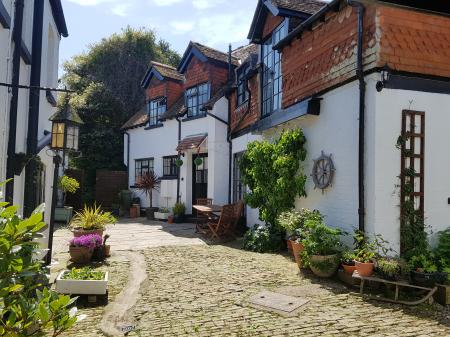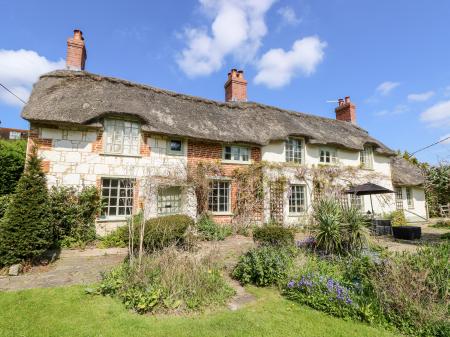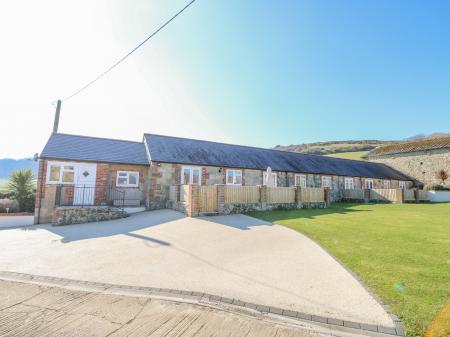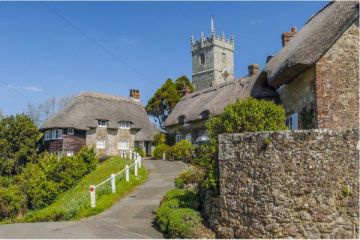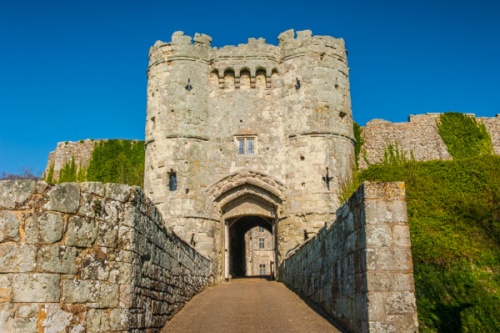
History
There was a Roman castle at Carisbrooke, established as part of the Roman efforts to defend the Saxon Shore from raids. After the Norman Conquest William fitz Osbern, Earl of Hereford, established a new castle here on the traditional Norman motte and bailey plan, with a pair of bailey enclosures leading to a tall motte surmounted by a fortified keep.
The castle later passed to the Redvers family. It was probably Baldwin de Redvers, Earl of Devon, who built the strong curtain wall to augment the earlier Norman defences.
It was not long before the castle began to play a part in national affairs; in 1136 Redvers sided with Queen Maud in her bid for the throne. The Earl was defeated by King Stephen and fled here from his mainland base. He thought the Carisbrooke defences would enable him to withstand the king's forces, but the water supply ran out and he was forced to surrender.
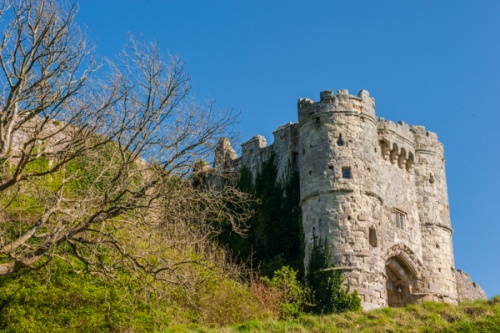
Carisbrooke owes much to one powerful woman, Countess Isabella de Fortebus. The Countess was one of the richest and most powerful 13th-century landholders in England, with estates stretching from Wight to Yorkshire.
In 1262 she chose to make her home at Carisbrooke. She transformed the stark castle defences to create a comfortable suite of rooms including a great hall, private chambers, and the chapel of St Peter. The chapel is now incorporated inside the museum area.
The Redvers family held the castle until the line died out with Isabella's death in 1293. The castle then passed under crown control, though it was frequently granted to royal favourites. In 1377 the castle repulsed an invasion by the French, but by the Tudor period, the major threat was from a Spanish invasion.
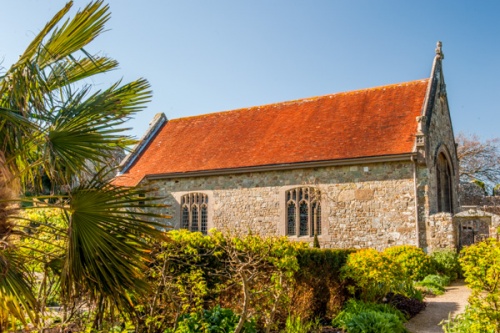
Beginning in 1597 the castle defences were extended with a series of bastions and earthworks designed by an Italian engineer named Gianbelli. The Tudor earthworks completely enclose the Norman baileys and are reinforced with stone and punctuated with 5 bastions shaped like arrowheads to counter the threat of artillery fire.
The castle is most famous for its association with Charles I. Charles was imprisoned at Carisbrooke in 1647 after his armies were defeated by Parliament in the Civil War. The king was lodged comfortably in the Constable's Lodging, a Tudor building that abuts the medieval Great Hall.
Charles could not stop plotting to renew hostilities with Parliament, and two subsequent attempts to escape from his 'gilded cage' moved his gaolers to keep him in much more secure and less comfortable quarters. Charles was eventually taken from Carisbrooke to London for execution.
In 1896 Princess Beatrice, youngest daughter of Queen Victoria, was made Governor of the Isle of Wight. The Princess made the castle her summer home after 1914.
What to See:
The Gatehouse
The classic view of Carisbrooke Castle is of the imposing, dominant twin-towered bulk of the gatehouse. This began as a simple gateway in the 13th century, but in 1336 Edward III extended it to create a central passage between round-turreted towers. Within the gatehouse passage are grooves for three portcullises.
The gatehouse gives access to the western bailey, which stands on the site of the original Roman fort. The gatehouse almost immediately proved its worth, helping defend the castle from the French invasion of 1377.
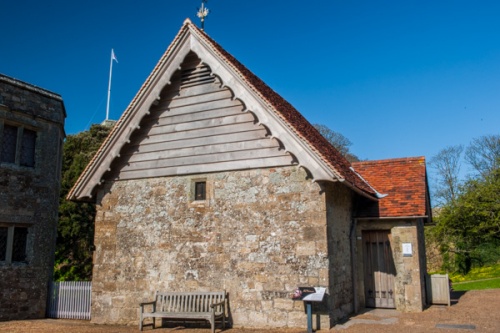
Princess Beatrice's Garden
Behind the chapel, this lovely formal garden is designed in Edwardian style to reflect the time when Carisbrooke was the summer home of Princess Beatrice, daughter of Queen Victoria.
St Nicholas Chapel
This exquisitely detailed chapel stands beside the Guardhouse. The chapel dates to the 13th century but it was completely rebuilt in 1899 to commemorate the 250th anniversary of Charles I's death in 1649. It later became a memorial to those who died in WWI, including Princess Beatrice's son Maurice, who died at Ypres in 1914. One end of the chapel is dominated by a large bust of King Charles and a monument to the dead soldiers.
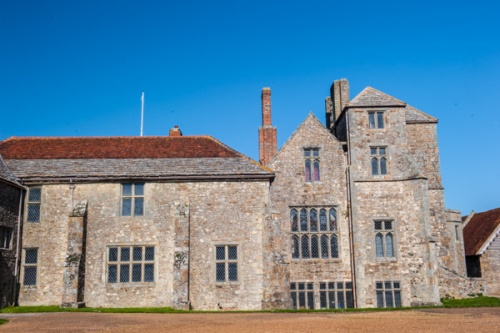
Great Hall and Museum
This fascinating museum occupies the Great Hall and governor's quarters. Within are objects related to the castle's history and the local history of the area. One of the highlights is a recreation of Charles I's bedroom. Other items on show include a painting of Carisbrooke by JMW Turner, a medieval jug, and Charles I's sword and nightcap. These are just a few of over 27,000 objects, only some of which are on regular display.
The Donkey Wheel and Wellhouse
One of the highlights of a visit to Carisbrooke is a visit to the Wellhouse, where water is drawn from a 161-foot deep wheel by donkeys walking on a large wooden treadmill. The treadmill is tied by a system of gears and pulleys to a rope attached to a bucket. The bucket is lowered into the well, then as the donkey walks steadily on the inner face of the treadmill the full bucket is drawn up to the surface.
This 'donkey-powered' well has been a feature of life at Carisbrooke for hundreds of years, after Baldwin de Redvers' surrender emphasised the need for a reliable supply of water for the castle garrison.
The wellhead building was erected in the Tudor period, but the well itself and its mechanism are much, much older, though it has been repaired several times. There are now 6 donkeys, and they alternate 'appearances' on the donkey wheel.
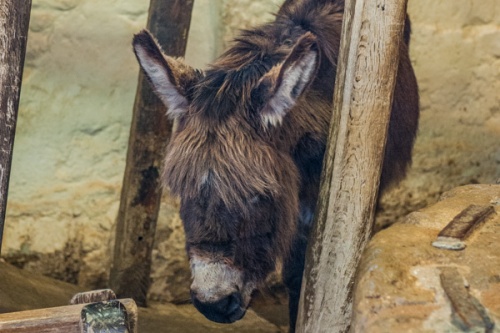
Donkey Centre
The donkeys are housed in a large complex of buildings in the western corner of the castle enclosure. All the donkey's names begin with the letter 'J', a tradition dating to the time when Charles I was a prisoner here. Charles signed letters to his fellow conspirators with the letter J, and the tradition began to name the donkeys with that same letter.
Charles I's Window
Set close against the north-west wall of the castle are a suite of rooms that formed part of the accommodation. High on the outer wall is a small, barred window. In 1648 Charles I attempted to escape through this window and climb down a rope to supporters waiting at the base of the castle wall. He had bribed a pair of gaolers to look the other way during his attempt. The gaolers took his money but then notified the castle authorities, and the attempt was foiled.
Charles had earlier tried a similar escape from his bedroom, but that time he misjudged the gap between the window bars and became wedged between them, caught like a rat in a trap until his gaolers found him.
Nearby is a window embrasure known as Isabella's Window, in honour of Countess Isabella. This window once gave light into the Countess's private quarters. It was glazed with coloured glass - a rare luxury, and built into the window were stone seats so the countess could enjoy views across her estates to the sea.
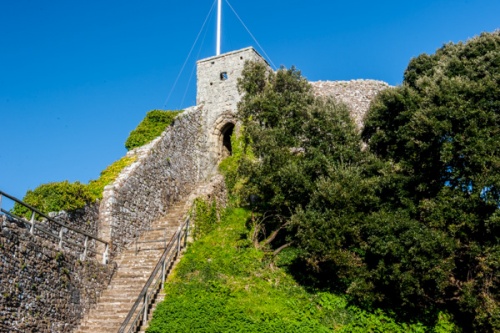
The Shell Keep
One of the earliest parts of the castle and still one of the most impressive; this tall stone keep, or fortified tower, sits atop a high conical mound, or motte. The keep was intended as the final, desperate refuge for defenders in case of attack, and is reached only by a steep set of stairs connected to the parapet walk.
There are very few intact features within the keep save for a garderobe chamber, but your reward for climbing to the top of the motte is a wonderful view over the castle and the bowling green to the north.
The Bowling Green
This large, level area was part of the extended defences, created when the outer bastions and earthworks were created. Soldiers used the flat space for parades and drilling, but more famously it was used by Charles I to play bowls during his imprisonment at Carisbrooke.
Visiting
I've visited the castle twice, and one thing that really strikes me is just how much historical interest is packed into a relatively small space. Walking the walls is a delight, with wonderful views in all directions. The great hall and museum are fascinating, but for most people, the highlight will be seeing the Carisbrooke donkeys draw water from the castle well! They don't have to work very hard, or for very long, and they seem to enjoy the attention.
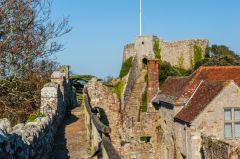
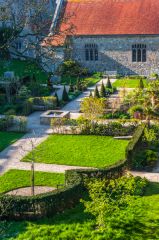
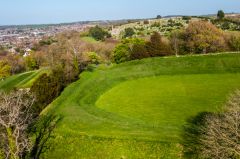
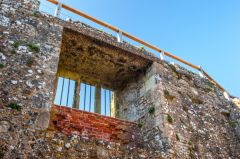
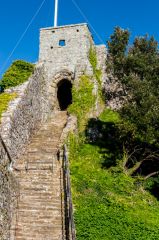
 We've 'tagged' this attraction information to help you find related historic attractions and learn more about major time periods mentioned.
We've 'tagged' this attraction information to help you find related historic attractions and learn more about major time periods mentioned.